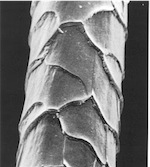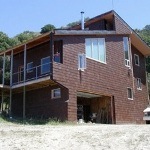Insulation should be applied in:
- Attic, or roof if there is no attic
- Crawlspace
- External facing walls
- Around ventilation ducts (to at least R-8)
Insulation should be applied after careful air sealing to close off all places for air leakage. Except for closed cell foam which acts like a sealant, most insulation materials allow air to pass through, although slowly. Any air passage into the living space will create air movement, resulting in heat loss or infiltration.
There are many different types of insulation materials with different performance characteristics and different costs. Fiberglass batts have been used extensively in residential applications. They are quite efficient and cost effective. More recently, cellulose which made from recycled newspaper is gaining popularity. It is a greener material because it takes less energy to make. It is also fairly easy to install and offers good insulation. Foam, which has seen many commercial applications, is getting used in homes. Foam has great insulation property but unfortunately is made from petroleum. Click #A’>certified and experienced professional for the job.
The US Department of Energy recommends levels of insulation in various climate zones, taking into account the average energy cost in the zones. Click the pictures to enlarge. For more details see DOE Insulation Recommendation.







